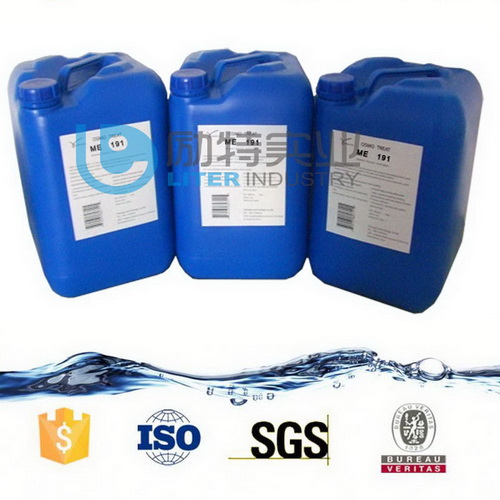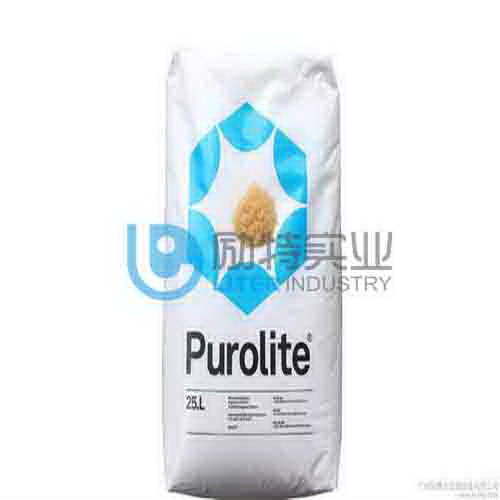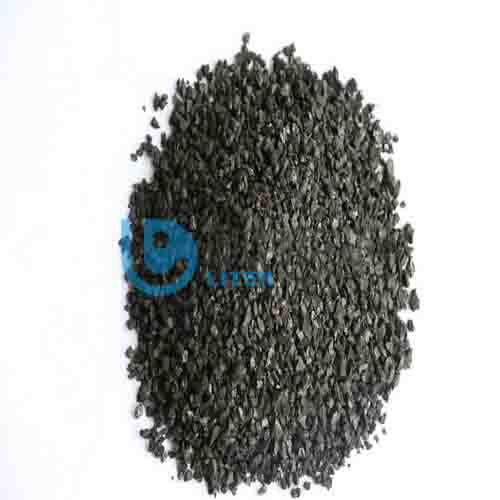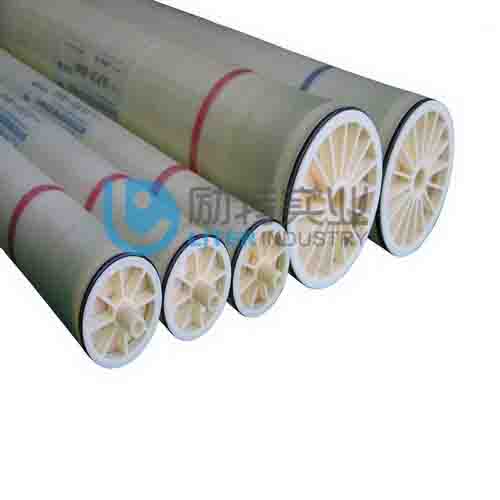- The product description
- The main function
- The basic parameters
1) Water treatment
The demand for ion exchange resin in the water treatment field is very large, accounting for about 90% of the output of ion exchange resin, which is used for the removal of various anions and cations in water. At present, the largest consumption of ion exchange resins is used in pure water treatment in thermal power plants, followed by atomic energy, semiconductors, and electronics industries.
2) Food industry
Ion exchange resins can be used in industrial devices such as sugar making, monosodium glutamate, wine refining, and biological products. For example, the production of high fructose syrup is to extract starch from corn, and then undergo hydrolysis to produce glucose and fructose, and then undergo ion exchange treatment to produce high fructose syrup. The consumption of ion exchange resin in the food industry is second only to water treatment.
3) Pharmaceutical industry
The ion exchange resin in the pharmaceutical industry plays an important role in the development of a new generation of antibiotics and the quality improvement of the original antibiotics. The successful development of streptomycin is a prominent example. In recent years, research has also been done on the commission of Chinese medicine.
4) Synthetic chemistry and petrochemical industry
In organic synthesis, acids and bases are commonly used as catalysts for esterification, hydrolysis, transesterification, hydration and other reactions. Using ion exchange resin instead of inorganic acid and alkali can also carry out the above reaction, and has more advantages. For example, the resin can be used repeatedly, the product is easy to separate, the reactor will not be corroded, the environment will not be polluted, and the reaction can be easily controlled.
The preparation of methyl tert-butyl ether (MTBE) is to use macroporous ion exchange resin as a catalyst, which is formed by the reaction of isobutylene and methanol, instead of the original tetraethyl lead, which can cause serious environmental pollution.
5) Environmental protection
Ion exchange resins have been applied to many environmental protection issues that are of great concern. At present, many aqueous or non-aqueous solutions contain toxic ionic or non-ionic substances, which can be recycled and used with resin. Such as the removal of metal ions in the electroplating waste liquid, and the recovery of useful substances in the film production waste liquid.
6) Hydrometallurgy and others
Ion exchange resin can separate, enrich, purify uranium and extract rare earth elements and precious metals from depleted uranium ore.
1. Food industry: Ion exchange resin can be used to make sugar, beverages, wine, dao, monosodium glutamate and other fields. High fructose syrup is a product produced by ion exchange resin treatment. Ion exchange resin is used in the food industry. The application is very wide, and the effect is very good, can effectively remove the ions of the liquid. 2. Chemical industry: In organic synthesis, ion exchange resin can be used as a catalyst for esterification, hydrolysis and other reactions, and it can be used repeatedly. The separation effect is very good, and it will not pollute the environment. It can be effectively controlled. Will not cause harm to the human body. 3. The pharmaceutical industry: Ion exchange resins have been used for pharmacy in the 1970s. At the beginning, they were used for the extraction, separation and purification of drugs. Due to the reversibility of ion exchange, they are used in slow and controlled release drug delivery systems and targeting It is also used in drug delivery systems. The ion exchange resin can not only be effectively controlled, but also is very safe. 4. Water treatment industry: Ion exchange resin is the most widely used in water treatment. It can be used for water desalination, softening, ultra-pure water production, etc. It can also adsorb metal ions in water, and can treat industrial wastewater containing heavy metals. , Especially the softened water resin, can effectively remove calcium and magnesium ions in hard water. The water produced by the food-grade softened resin can be directly consumed and is very safe. 5. Environmental protection: Ion exchange resins can effectively adsorb substances in aqueous and non-aqueous solutions, can remove harmful substances, such as sewage treatment, industrial wastewater, etc., and can effectively deal with environmental pollution problems.
Resin particle size Ion exchange resin is usually made into small beads in the form of beads, and its size is also important. The resin particles are finer, the reaction speed is greater, but the resistance of the fine particles to the passage of the liquid is greater, and a higher working pressure is required; especially when the viscosity of the concentrated sugar liquid is high, this effect is more significant. Therefore, the size of the resin particles should be selected appropriately. If the resin particle size is below 0.2mm (approximately 70 mesh), it will significantly increase the resistance of the fluid to pass and reduce the flow rate and production capacity. The resin particle size is usually measured by the wet sieving method. The resin is sieved after fully absorbing water and swelled, and the remaining amount on the 20, 30, 40, 50... mesh screen is accumulated, so that 90% of the particles can pass through it. The diameter of the sieve is called the "effective particle size" of the resin. The effective particle size of most common resin products is between 0.4 and 0.6 mm. Whether the resin particles are uniform is expressed by the uniformity coefficient. It is the ratio of the corresponding sieve diameter to the effective particle size by taking the cumulative retained amount of 40% of the particles on the "effective particle size" coordinate chart of the measured resin. For example, the effective particle size of a resin (IR-120) is 0.4~0.6mm, and the particles remaining on the 20 mesh sieve, 30 mesh sieve and 40 mesh sieve are 18.3%, 41.1%, and 31.3% respectively, then the calculation is The uniformity coefficient is 2.0. The density of the resin The density of the resin when it is dry is called the true density. The weight of the wet resin per unit volume (including the voids between the particles) is called the apparent density. The density of the resin is related to its degree of crosslinking and the nature of the exchange group. Generally, a resin with a high degree of crosslinking has a higher density, a strongly acidic or a strongly basic resin has a higher density than a weak acid or a weakly basic resin, and a macroporous resin has a lower density. For example, the true density of styrene-based gel-type strong acid cation resin is 1.26g/mL and the apparent density is 0.85g/mL; while the true density of acrylic gel-type weak acid cation resin is 1.19g/mL and the apparent density is 0.75 g/mL. Solubility of the resin The ion exchange resin should be an insoluble substance. However, the substances with a low degree of polymerization contained in the resin synthesis process and the substances generated by the decomposition of the resin will dissolve out during operation. Resins with a lower degree of crosslinking and more active groups have a greater tendency to dissolve. Swelling degree Ion exchange resin contains a large number of hydrophilic groups, and it will swell by absorbing water when it comes in contact with water. When the ions in the resin change, for example, the cationic resin changes from H+ to Na+, and the anionic resin changes from Cl- to OH-, both will expand due to the increase of ion diameter, increasing the volume of the resin. Generally, a resin with a low degree of crosslinking has a larger degree of swelling. When designing the ion exchange device, the swelling degree of the resin must be considered to adapt to the resin volume change caused by the ion conversion in the resin during production operation. Durability The resin particles have changes such as transfer, friction, expansion and contraction during use, and there will be a small amount of loss and breakage after long-term use, so the resin must have higher mechanical strength and wear resistance. Generally, resins with a low degree of cross-linking are easier to break, but the durability of the resin is more mainly determined by the uniformity of the cross-linked structure and its strength. Such as macroporous resin, with a higher degree of cross-linking, the structure is stable, and can withstand repeated regeneration.




















